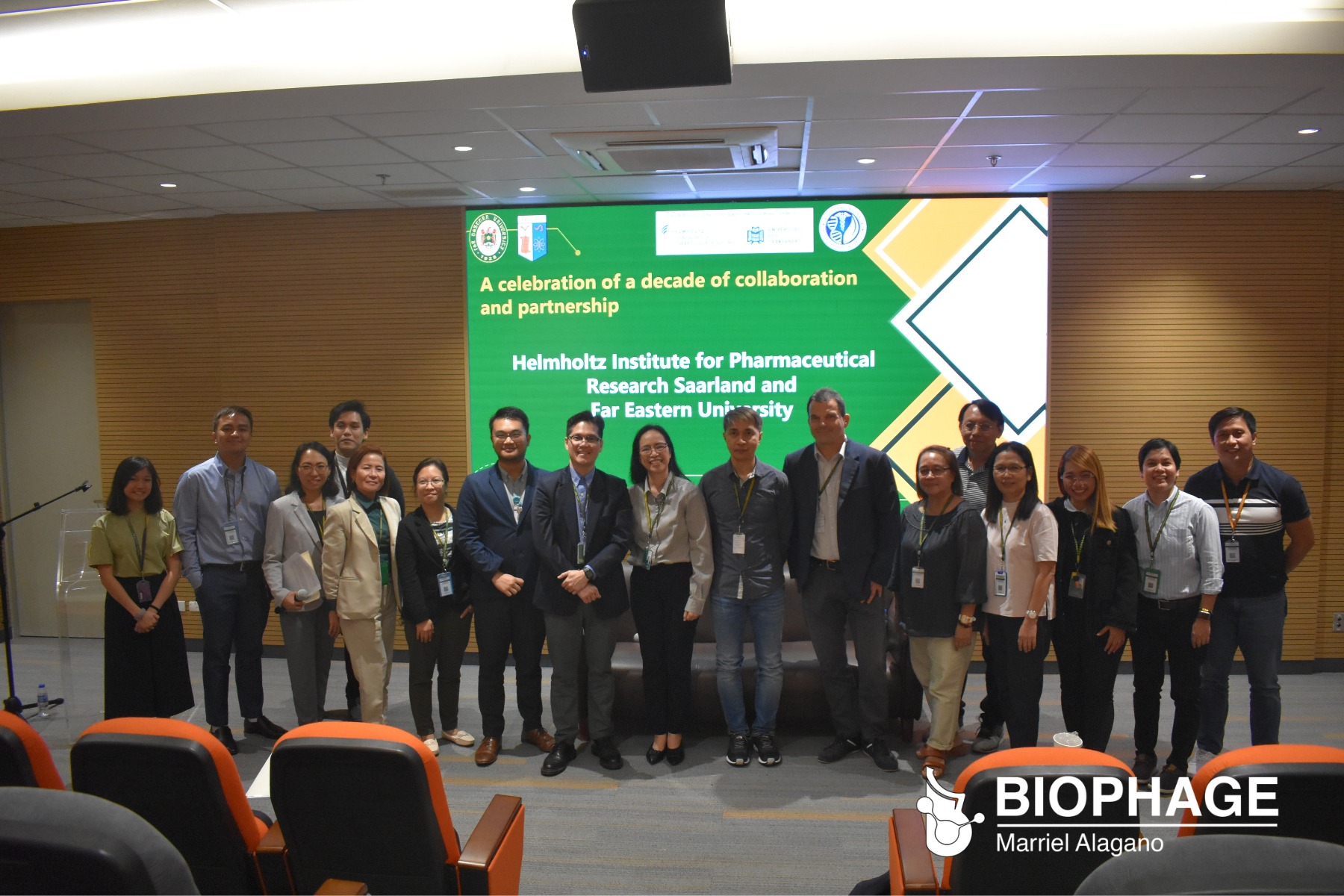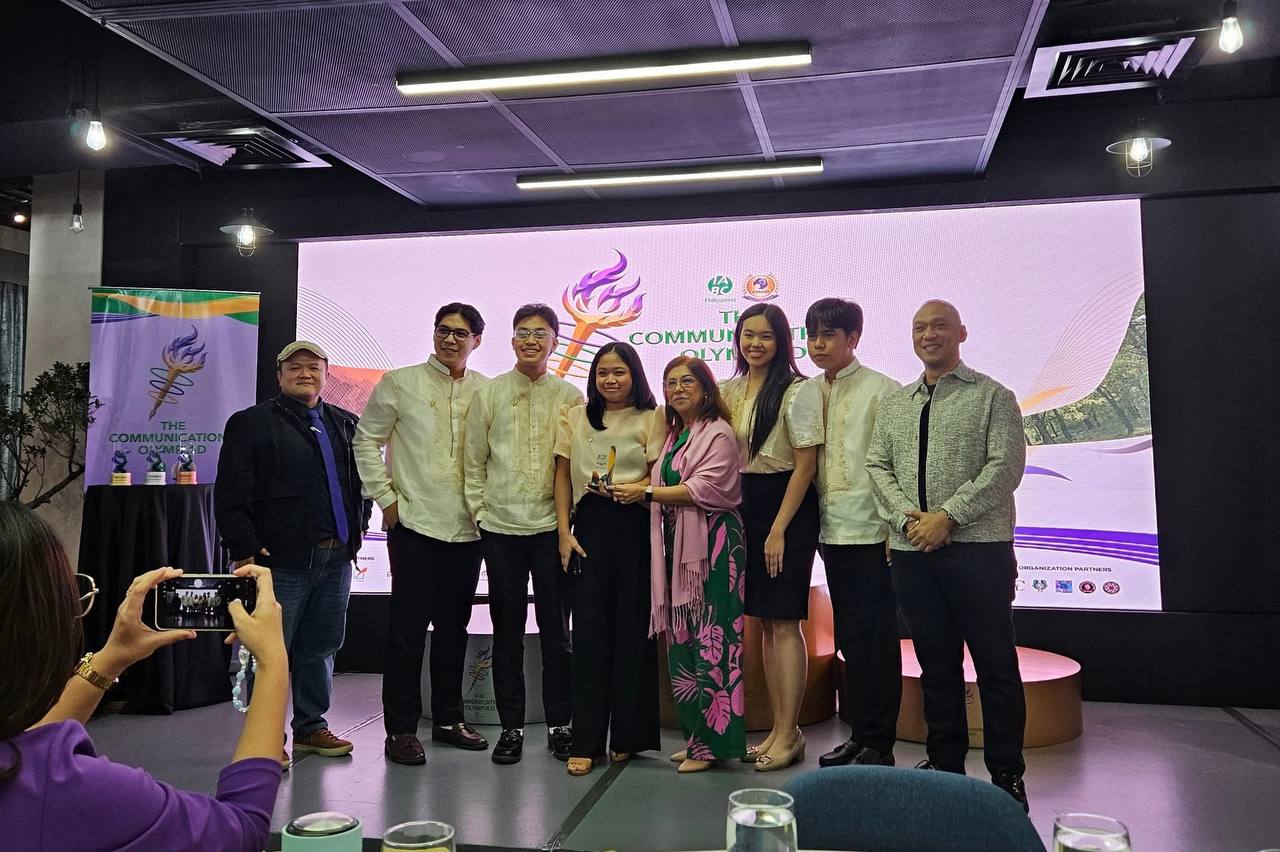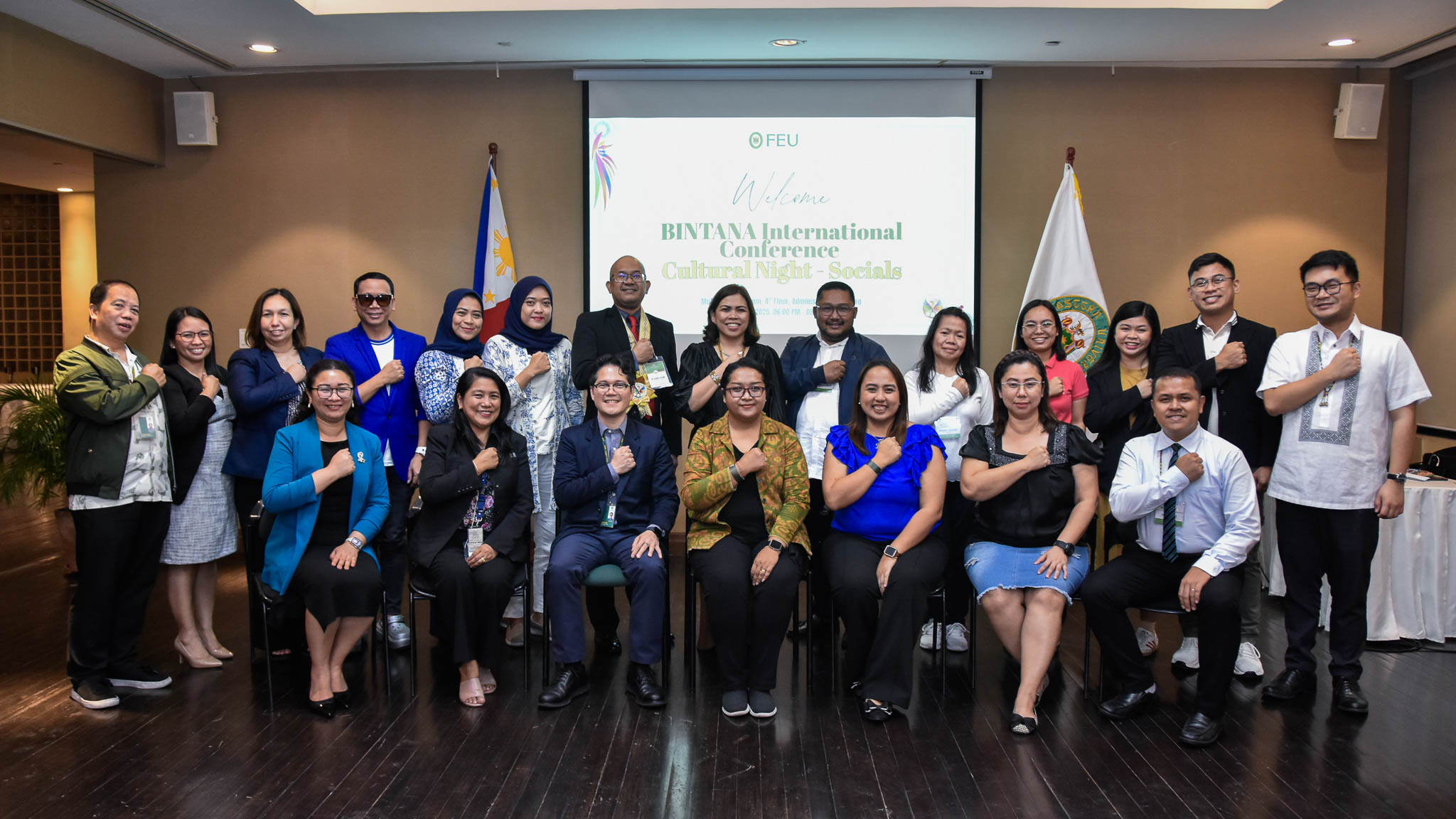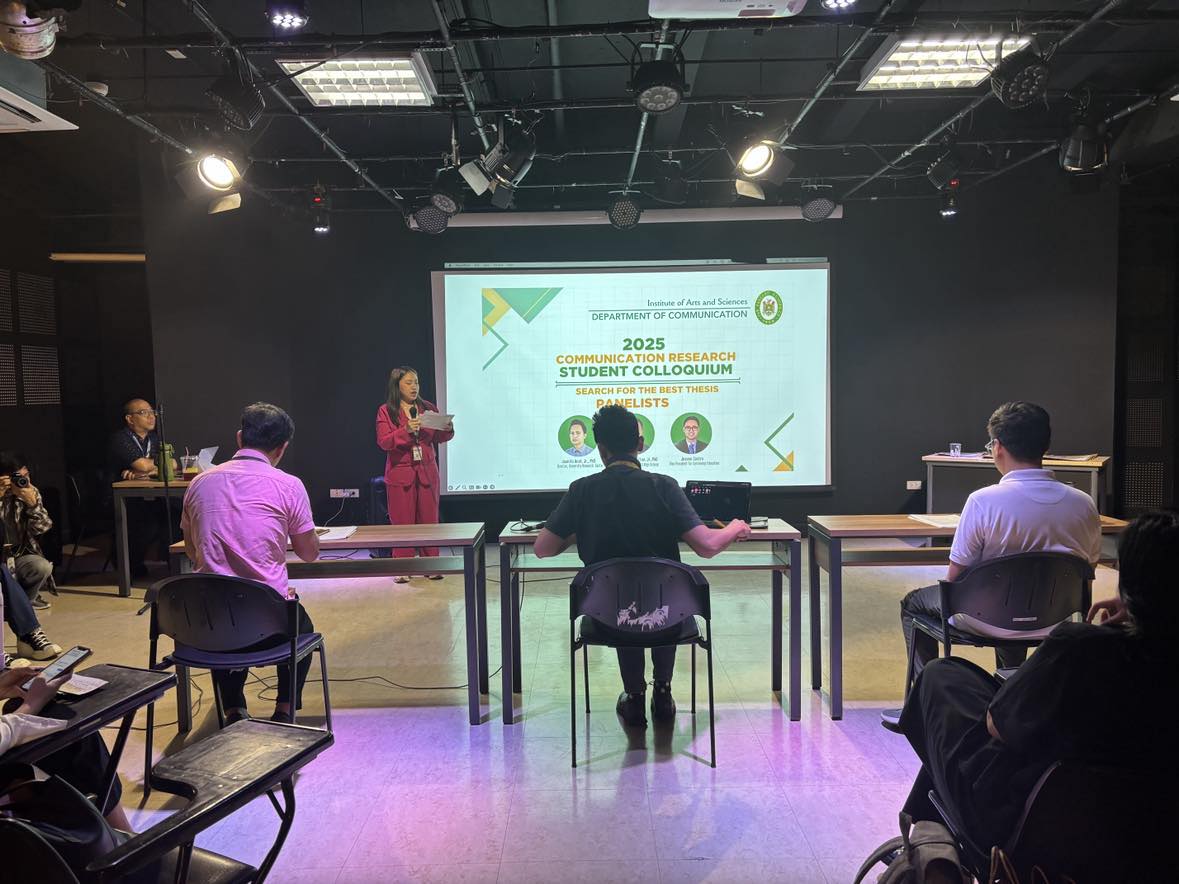This year, Far Eastern University (FEU) and Helmholtz-Institut für Pharmazeutische Forschung Saarland or Helmholtz Institute for Pharmaceutical Research Saarland (HIPS) celebrate a decade of collaboration and partnership.
Highlighting this 10th-year anniversary were three lectures by HIPS managing director Prof. Dr. Rolf Müller, HIPS scientist Dr. Ronald Garcia, and FEU Institute of Arts and Sciences (IAS) faculty and Doctor of Philosophy candidate Mary Victory Gutierrez.
Rolf talked about “Microorganisms as a source of innovative compounds against drug resistant bacterial pathogens.” For his part, Ronald spoke on “Myxobacterial Biology and Natural Product Research.” Mary presented her topic on “Identification, Phenotypic Molecular Characterization of Philippine Myxobacteria.”
The lectures were held recently at the FEUture Center Auditorium and were attended by students from the IAS BS Biology program. These showcased the enthusiasm and dedication of the team of scientists from HIPS in their work, and it was well received by the students showing equally their interest while asking profound questions during the forum, said one participant.
According to its website, HIPS “focuses on the development of novel anti-infectives by combining state-of-the-art medicinal chemistry and natural product-based research with innovative drug delivery approaches.”
“Research at HIPS is,” its website also shows, “based on the following four research areas: Microbial Natural Products, Drug Design and Optimization, Biological Barriers and Delivery, and Drug Bioinformatics. Close collaboration between these research areas allows us to streamline the development of novel anti-infectives.”
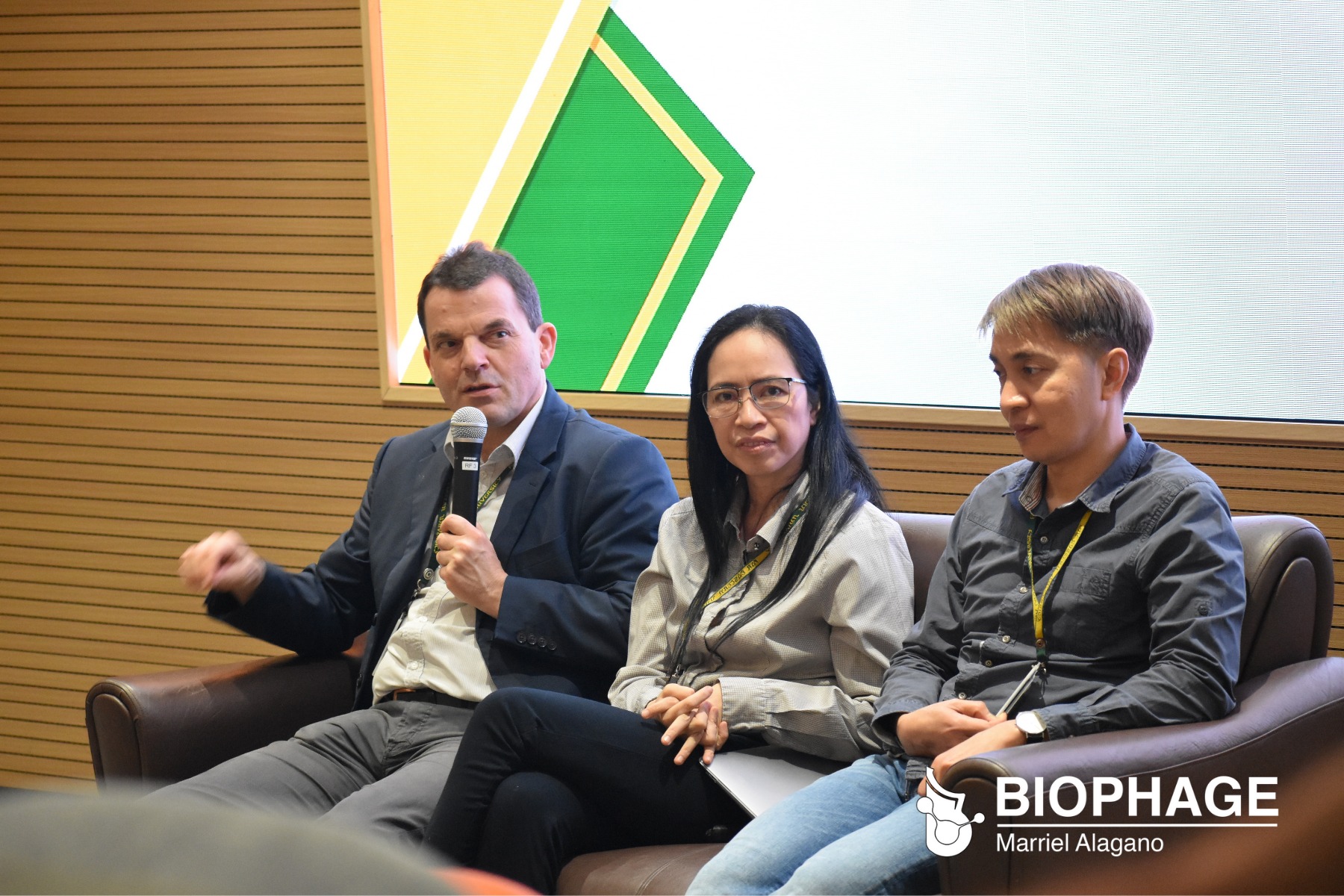
“Development of novel antibiotics is currently only possible in close collaboration with various academic and industrial partners. We aim to bridge the translational gap caused by market failure in numerous collaborations and public private partnerships to enable anti-infective development in the fight against antimicrobial resistance,” said Rolf, on the HIPS website.
Research Work
Myxobacteria commonly occur in soils anywhere on earth, so to Mary’s amazement she found them in rice straws too.
“It was during my first year as a PhD student at De La Salle University when I discovered that myxobacteria could be cultivated from rice straws,” she said.
Previously Mary had collected soil samples from Ninoy Aquino Parks and Wildlife Center. Her friend in Baguio also sent her pine needles. The myxobacteria that occurred from these were not enough for the thesis required of her by Prof. Esperanza C. Cabrera at DLSU.
Soon after returning to FEU with rice straws from a brief homecoming, she began culturing myxobacteria in the Biology Laboratory of the IAS.
“Two to three days later hundreds of myxobacteria occurred,” said Mary. Within one month she finished writing her mini-thesis.
Equipped with this knowledge and laboratory work, she continued her research at HIPS in Saarbrücken, Germany. She also took the opportunity to present the findings of her research.
“The organic substrates [dried rice straws] were collected, properly tagged, and accurate geographical locations of the sampling area using the Global Positioning System (GPS) were recorded,” said Mary. “Using the moist chamber protocol, 4-5 strips of dried rice straws were obtained and processed. [These were] incubated for months to cultivate fruiting bodies of myxobacteria. Then the process of isolation and purification followed. Extraction of DNA was conducted to identify the isolates. [They] are a good source of bioactive compounds, so a series of steps are followed.”
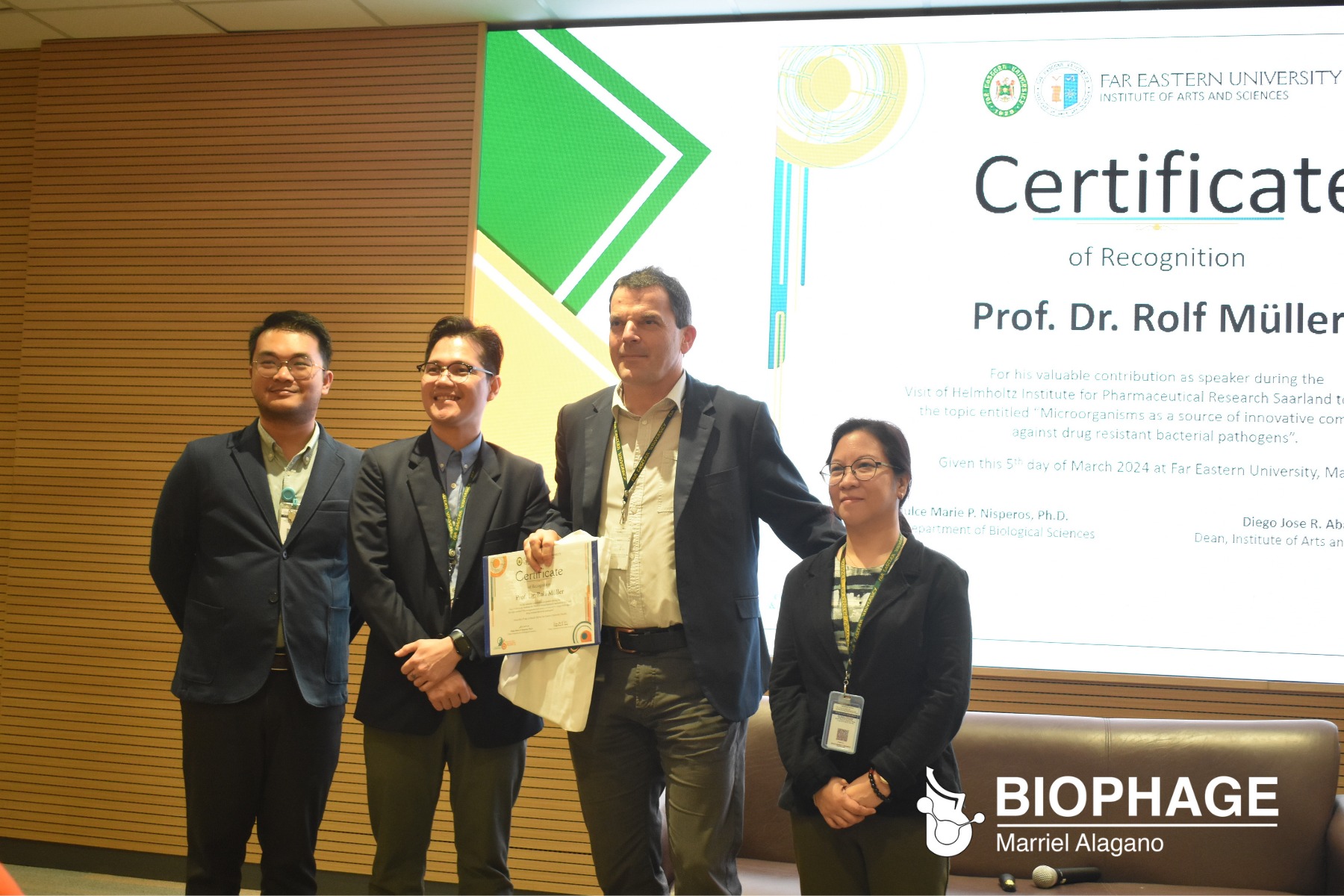
Mary continued: “For the determination of their pharmaceutical properties, firstly, I did whole genome shot gun sequencing, gene prediction and annotation of Biosynthetic Gene Clusters (clusters). I evaluated and assessed their draft of their whole genome for specialized metabolite gene clusters which possess pharmaceutical properties.
“Secondly, I did Kirby-Bauer Disc Diffusion Antimicrobial assay by obtaining crude extracts for the secondary from Myxobacteria, and assessing the action of these secondary metabolites against bacteria: Micrococcus luteus, Bacillus subtilis, Pseudomonas syringae, and Escherichia coli, and fungi: Yarrowia lipolytica and Wickerhamomyces anomalus.
“Thirdly, I did Bioassay-Guided Fractionation and GC-MS (Gas chromatography and Mass Spectrometry) where bioactive metabolites/compound were annotated and identified.”
Of Farmers and Rice Straws
In 2023 Mary presented her findings from “Rice straws from the Philippines: A good source of myxobacteria with metabolic potential for bioactive compounds” during the International Helmholtz Drug Discovery Conference in Braunschweig, Germany; PhDs progress seminar at HIPS; and “Isolation of Myxobacteria from Philippine Rice Straws and determination for their bioactive compounds by bioassay-guided fractionation: A Prospective Study” during the International VAAM Symposium: Biology of Bacterial Natural Product Producers, also at Saarland U.
Five years before Germany she showed her “Phylogenetic analysis of isolated Philippine Myxobacterial strain MB008 inferred from 16S rRNA gene sequence” in Monash University, Subang Jaya, Malaysia.
Mary also participated in the 2019 PNMCC Annual Symposium and General assembly: Innovation and challenges in Microbial Culture Collection Curation at the University of Santo Tomas, with her study on “Occurrence and 16S rRNA Gene Phylogeny of Myxobacteria from plant substrata in Luzon.”
She credited the farmers of the Ilocos Sur towns of Narvacan and San Vicente for her discovery. Therefore, her plans are always made to coincide with the harvest season in October or November when there is an abundance of rice straws. Also, she could get the best of both worlds: Narvacan, being near the mountains; and San Vicente, close to the sea where rice fields are exposed to the aquatic elements.
“Bacteria are cultivated under controlled conditions,” said Mary. “They cannot be crowded or there would be cannibalistic activity.”
Scientists who do research need to acquire the necessary permits. Mary processes these at the Department of Environment and Natural Resources. She also seeks permission from local government officials, including barangay captains.
“I see to it that goodwill is maintained between me and the farmers. My family, especially my mother and sister, introduced me to farmers’ associations. The farmers themselves helped me expand my network,” said Mary. She does her own outreach projects benefiting the farmers, showing them her appreciation.
She would want them to appreciate the use and beauty of rice straws—mere agricultural waste—upon which myxobacteria occur that can be studied further for their probable disease curing properties.
“When Dr. Maria Teresa T. Tinio, Senior Vice President for Academic Affairs of FEU, told me that I was awarded with a research grant that would give me the opportunity to work at HIPS I was overjoyed,” said Mary.
For one year from January 1, 2023 to December 31, 2023 she did her research at HIPS, where she had access to her laboratory 24/7. All she needed was her card and key to get in.
Rolf, managing director of HIPS, said Mary is an enthusiastic, optimistic, and motivated post-graduate student.
“Mary is very much fascinated by her work and loves to work with microorganisms. Studying their lifecycle, importance, and potential application is her passion,” said Rolf, also admiring Mary’s friendly personality.
Mary hoped the collaboration between FEU and HIPS would be sustained, especially that this provides avenues and venues for scientific interaction and global networking—contributing to UN Sustainable Development Goals: Good Health and Well-being (3); and Partnerships for the Goals (17).
